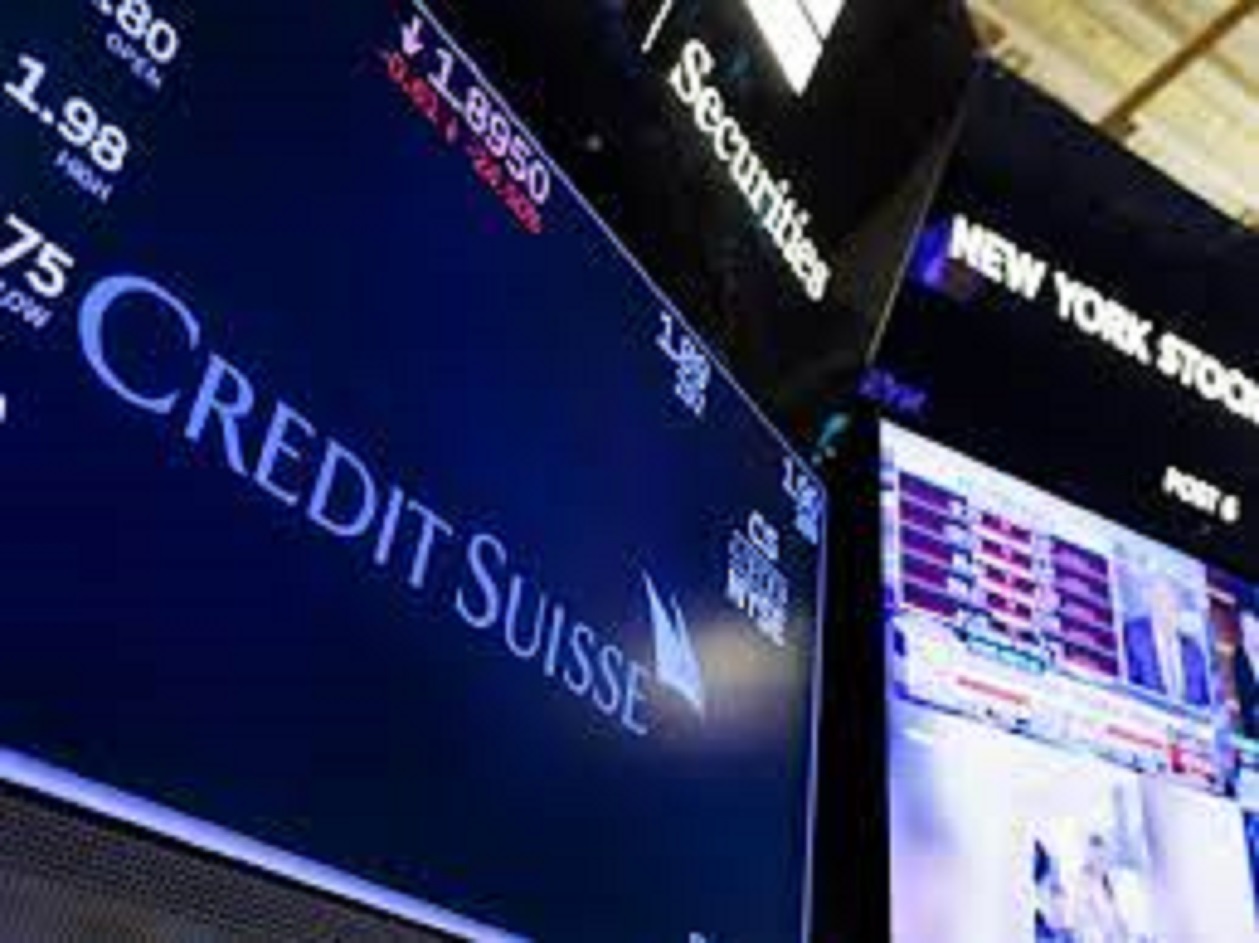Introduction : Collapse of Credit Suisse
The stock markets experienced a significant decline on the fourth day of July, with negative sentiment taking hold of investors. The Ibex 35, the Spanish index, declined by 2.12% on Thursday, reaching 9,285 points. This marks the third consecutive session of losses in a negative environment for equities, with several pressing issues impacting the market. These issues include concerns about monetary policy and its potential impact on economic growth, doubts regarding the performance of the Chinese economy, minutes from the Federal Reserve downplaying further interest rate hikes, and stronger-than-expected employment data in the United States. As a result, major stock markets worldwide witnessed significant declines, experiencing their worst session since the collapse of Credit Suisse on March 15. Analysts’ consensus gives a 91% chance of the Federal Reserve raising rates on July 26, with the possibility of another increase between September and November.

Which Stocks Are Rising or Falling the Most?
Within the Ibex 35, only one company managed to escape the declines. Indra recorded a modest increase of 0.51%. However, other companies experienced significant drops. The worst performers in the index were:
- IAG: -4.14%
- Merlin: -4.07%
- Colonial: -3.80%
Meanwhile, Caixabank and Cellnex witnessed moderate declines of -0.57% and -0.67%, respectively.
Stock Market Performance Around the World
The negative sentiment was not limited to the Spanish market; European stock markets also experienced a decline. The French CAC was the worst-performing index of the session, falling by 3.13%. It was followed by the German DAX, which declined by 2.57%, and the Italian MIB, which saw a decrease of 2.53%. The British FTSE 100 lost 2.17%, while the Euro Stoxx declined by 2.93%.
Moreover, the Chinese stock market experienced a poor day with a 3% decrease due to the lack of expectations for additional stimuli. This added to the overall negative tone set by the minutes from the US Federal Reserve (Fed), which indicated the possibility of more interest rate hikes this year. The Nikkei in Japan fell by 1.70% due to renewed concerns about the global economy. Wall Street also opened in the red, with the Dow Jones erasing another 0.6%.
US Treasury Secretary’s Visit to China and Trade Relations
Janet Yellen, the US Treasury Secretary, began her official visit to China on the same day. The purpose of the visit was to ease tensions between the two countries regarding trade relations. While the US Treasury Department did not provide specific details about the topics to be discussed, it is highly likely that the restrictions on microchips imposed by Washington will be one of the focal points.
Key Points of the Session
Several key factors contributed to the market decline:
- Concerns about the economic weakness in China.
- Concerns about the strength of the US economy.
- Greater economic resilience than expected from the US, leading to the anticipation of new interest rate hikes.
- The prospect of the Fed intervening again to tighten interest rates.
- Harsh impact on the price of US bonds, with investors rushing to sell them, causing yields to rise.
- Interest rates in the UK expected to reach highs not seen since 1998, around 6.5%.
Amidst these developments, the Spanish Treasury conducted a medium- to long-term debt auction, where they placed €7.02855 billion, meeting the upper-middle range of expectations. Investors showed continued interest in Spanish debt securities, although the total demand of €10.018 billion fell short of doubling the final amount allocated in the markets. The auction included inflation-linked State bonds, 7-year State bonds, 10-year State bonds, and 50-year State bonds.
In Germany, factory orders increased by 6.4% in May compared to the previous month, indicating positive growth in the German industry. However, on an annual basis, new orders experienced a decline of 4.3% in May, following a year-on-year decrease of 9.3% in April.
The volume of retail trade in the eurozone continued its downward trend, with a year-on-year decrease of 2.9% in May, consistent with the previous month. This extended the eighth consecutive month of decline in retail trade reported by Eurostat. In the entire EU, retail trade decreased by 3% compared to the previous year.
On the other hand, the US private sector created 497,000 net jobs in June, according to the ADP survey. This figure exceeded expectations and demonstrated the strength of the American labor market. However, weekly jobless claims rose, indicating some volatility in the job market.
The US trade deficit in goods and services decreased by 7.3% in May compared to April, reaching $69 billion. The decline was driven by a decrease in imports by 2.3% and a decrease in exports by 0.8%. These figures are closely analyzed as they reflect the effects of interest rate hikes in the United States.
Analysts’ Perspective
Steen Jakobsen, Chief Investment Officer at Saxo Bank, believes that the second half of 2023 will be challenging for the markets. While he considers a deep recession unlikely, he expects interest rates to remain high for a longer period. Jakobsen also points out that valuations of companies in the field of artificial intelligence (AI) have gone too far, and he believes that the market is getting ahead of itself. He emphasizes the need for fundamentals to support the valuations of such companies.
In conclusion, the stock markets experienced a significant decline, with the Ibex 35 in Spain reaching its lowest level in recent sessions. The negative sentiment was not limited to Spain, as major stock markets around the world also recorded losses. Concerns about monetary policy, Chinese economic performance, and strong employment data in the US were some of the factors contributing to this decline. Amidst these developments, various economic indicators and events, such as debt auctions and trade relations between the US and China, were closely watched. Looking ahead, market participants will continue to monitor the impact of interest rate hikes and other global economic factors on stock market performance.
FAQs
1. What caused the stock markets to fall in their worst session since the collapse of Credit Suisse? The stock markets experienced a decline due to a combination of factors, including concerns about monetary policy, doubts regarding the Chinese economy, minutes from the US Federal Reserve downplaying further interest rate hikes, and stronger-than-expected employment data in the United States.
2. Which stocks performed the worst in the Ibex 35? IAG, Merlin, and Colonial were the worst-performing stocks in the Ibex 35, experiencing significant declines during the session.
3. How did other stock markets perform during this session? European stock markets also recorded losses, with the French CAC, German DAX, and Italian MIB experiencing significant declines. The British FTSE 100 and Euro Stoxx also witnessed notable decreases.
4. What economicimpact did the US Treasury Secretary’s visit to China have on trade relations? The visit of US Treasury Secretary Janet Yellen to China aimed to ease tensions between the two countries regarding trade relations. While specific details about the discussions were not provided, it is expected that topics such as the restrictions on microchips imposed by Washington would be addressed.
5. What are analysts saying about the current market situation? Analysts, such as Steen Jakobsen, Chief Investment Officer at Saxo Bank, anticipate a challenging second half of 2023 for the markets. Concerns about interest rates and the valuation of companies in the field of artificial intelligence have been highlighted. Jakobsen emphasizes the need for fundamental support for valuations in the market.
- What caused the collapse of Credit Suisse? The collapse of Credit Suisse was primarily caused by a combination of factors, including high-risk investments, inadequate risk management practices, and exposure to significant losses related to risky trading positions.
- How did the collapse of Credit Suisse impact the stock market? The collapse of Credit Suisse had a negative impact on the stock market, leading to a decline in investor confidence and triggering a broader market sell-off. The event created concerns about the stability of financial institutions and their potential vulnerability to similar risks.
- What were the warning signs leading up to the collapse of Credit Suisse? Some warning signs leading up to the collapse of Credit Suisse included the bank’s exposure to high-risk investments, declining financial performance, internal control issues, and regulatory scrutiny. These factors raised concerns about the bank’s overall stability and management practices.
- Who were the key players involved in the collapse of Credit Suisse? The collapse of Credit Suisse involved various key players, including top executives and management personnel responsible for making critical decisions regarding risk management, investment strategies, and oversight. Regulatory bodies and external auditors also played a role in monitoring and evaluating the bank’s operations.
- What were the financial implications of the collapse of Credit Suisse? The financial implications of the collapse of Credit Suisse were significant. The bank faced substantial losses, eroded market value, and damage to its reputation. It also incurred costs associated with legal proceedings, regulatory penalties, and efforts to restore stability and rebuild investor trust.
- How did regulators respond to the collapse of Credit Suisse? Regulators responded to the collapse of Credit Suisse by conducting investigations, imposing fines and penalties, and implementing stricter oversight and regulatory measures to prevent similar incidents in the future. They also focused on enhancing risk management practices and strengthening the resilience of the financial system.
- What lessons can be learned from the collapse of Credit Suisse? The collapse of Credit Suisse provides several important lessons. It underscores the significance of robust risk management practices, effective corporate governance, transparency, and accountability within financial institutions. It also highlights the need for vigilant regulatory oversight and proactive measures to detect and address potential risks and vulnerabilities.
- How did the collapse of Credit Suisse affect the banking industry? The collapse of Credit Suisse had a broader impact on the banking industry. It raised concerns about the overall stability and risk management practices of financial institutions, leading to increased scrutiny, stricter regulations, and a greater emphasis on accountability and transparency. It prompted a reevaluation of risk models and a renewed focus on risk culture within banks.
- What measures were taken to prevent similar collapses in the future? Following the collapse of Credit Suisse, various measures were implemented to prevent similar collapses in the future. These measures included enhanced risk assessment and management frameworks, stricter regulatory oversight, improved internal controls, increased transparency, and greater accountability at both individual and organizational levels.
- What is the long-term outlook for Credit Suisse following the collapse? The long-term outlook for Credit Suisse following the collapse is influenced by several factors, including the effectiveness of the bank’s recovery efforts, the rebuilding of investor trust, regulatory compliance, and market conditions. Implementing comprehensive reforms, demonstrating stability, and focusing on prudent risk management will be crucial for Credit Suisse’s long-term success and reputation restoration.
You May also be interested to read Warren Buffett’s Investment Principles
HDFC Bank Merger
Read more about Warren Share Market : The Little Book of Common Sense Investing



[…] Collapse of Credit Suisse : The Stock Markets Fall 2% in Their Worst Session Since the Collapse of … […]